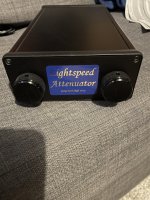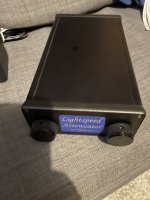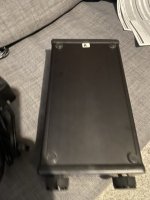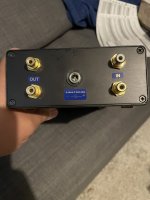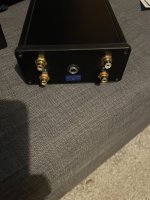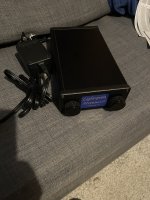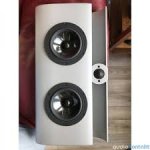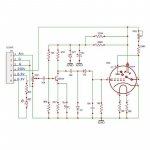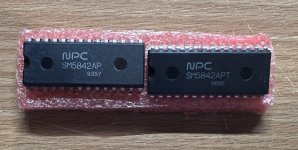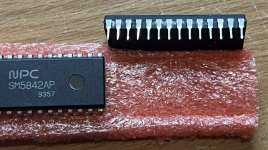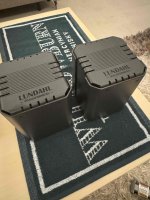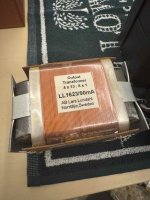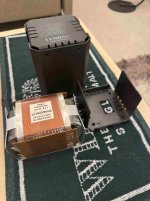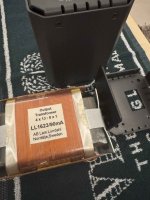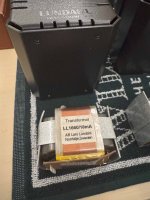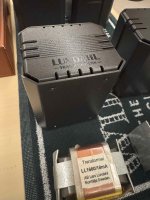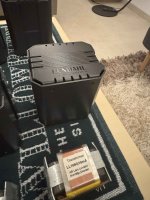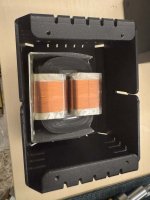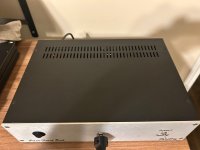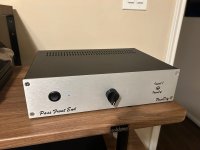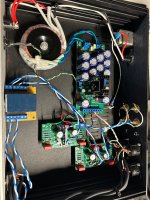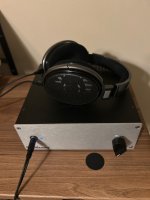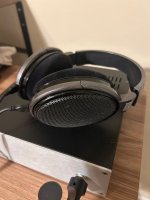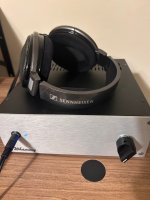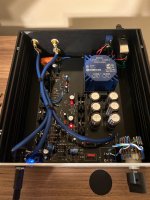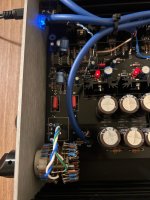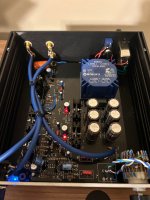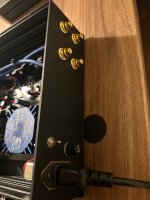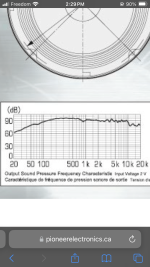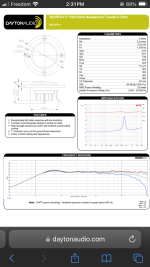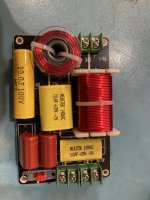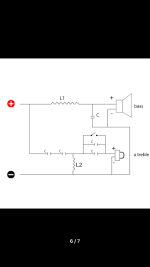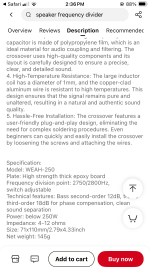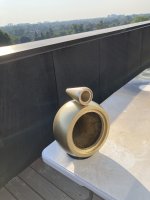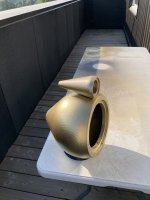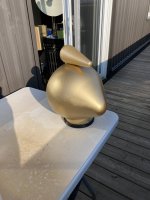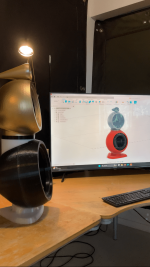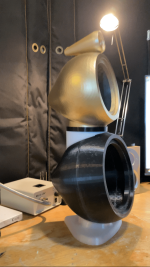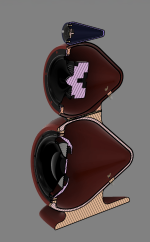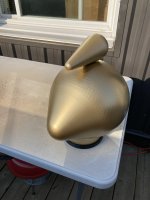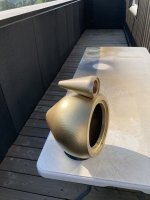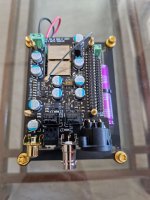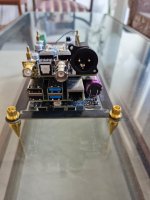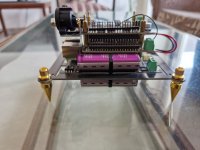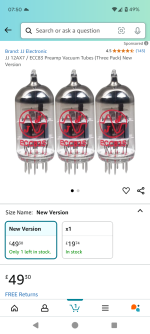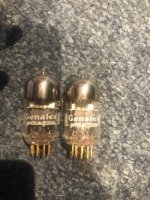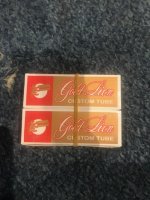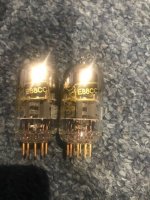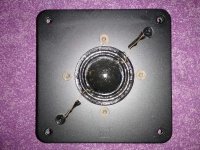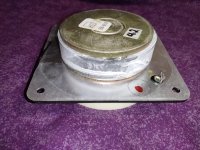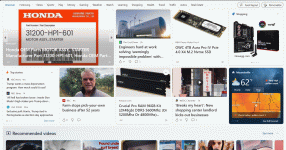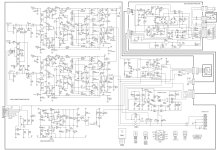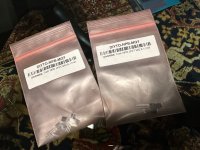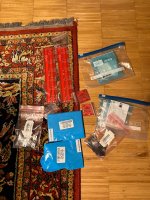Hi all, please forgive what to a lot of you are very newbie questions. I have searched quite a bit for answers, but it's kind of hard to digest and apply everything in practice...
I'm building a subwoofer for music / HT use in my living room. It's going to replace an XTZ 10.17 (non-edge). For several reasons, I'm limited to a relatively "thin" and small box. I've bought a used RSS315HO-44 in very good condition that I'm going to use for the project. I understand this is a driver that should work well in small enclosures. Haven't bought an amplifier for it yet.
I don't listen crazy loud, but I like proper low extension, and I feel the XTZ lacks just a little bit in that area. It works OK enough for my needs, and I could probably have lived with it for the sound alone, but it doesn't really fit in the living room so I want to get rid of it. My living room has one open side, meaning the total room is quite large.
I was originally thinking to build a sealed box. According to WinISD, in a sealed box of ca 25 liters (I could go up to 41 liters), the driver at Xmax will give me around 97.5 dB
@20hz and 104 dB
@30Hz (700W) (using the SPL tab in WinISD). I believe this is around 1 dB better than the XTZ at 20Hz but around 5 dB worse at 30Hz. The -3dB point is in the mid 40s. If I make the box vented, 32 liters net volume (when vents, bracing, driver etc are subtracted), tuned for 24 Hz, vent pipe dia 9.74 cm, vent length 114 cm, I get 102 dB @ 20Hz and 110 dB @ 30 Hz, with a very flat response from 100 to 27 Hz. Port velocity is a bit high at 28 m/s max, but I believe I'll never reach that level with music, and for HT it might be OK. Driver excursion seems to be OK provided I high pass it @17 Hz. I'm thinking to stuff the box with polyfill.
Ok, so here are my questions:
1. Based on the WinISD simulation, the vented version seems like the obvious choice. It gives a lot flatter response in general, and a lot more dB below 45 hz. But still, I see a lot of people recommend sealed boxes and one of the arguments is that room gain gives the sealed box quite a bit more output in-room than the simulation indicates. What do you guys think? The sealed version is of course a bit easier to build, especially for a first timer.
2. I understand I could do EQ or even Linkwitz transform for the sealed box (provided I could get a proper DSP in the chain), but I would still be limited by the xmax of the driver, right? So I can't really get more output @ 20 and 30Hz than what WinISD gives me above?
3. Since I'm very inexperienced, dB numbers are a bit hard to relate to. I don't really know if 97.5 dB @ 20Hz and 105 @ 30 Hz might actually be quite sufficient for me. But as I said, I feel the XTZ lacks just a little bit (not much) of power for my needs in that large room. What are your experiences, what dB numbers would you think I should aim at (using the SPL tab in WinISD)
4. If I do vented, do you see a problem with the long vent pipe? I'm thinking to use flared ports (inlet and outlet). I know it's generally recommended to not go above 20 m/s but I believe my music listening will not exceed that, and for HT it's maybe not that important?
5. If I do vented, I'm thinking to use thin PVC pipe (HVAC air pipe) with 1.3 mm thick walls for the vent, and buy "aeroports" for the flared ends. Do you see any problems with this, or do you have better solutions to recommend?
6. The driver can be connected in 2 or 8 ohm configuration. It's easiest and cheapest to get an amp that can do 700 watts @ 8 ohm (bridged) as far as I can see. Does this give any disadvantages over using 700 watts @ 2 ohm (paying a bit more for an amp that is 2 ohm stable)?
7. Any general input or recommendations for the build?
